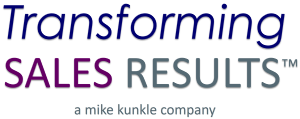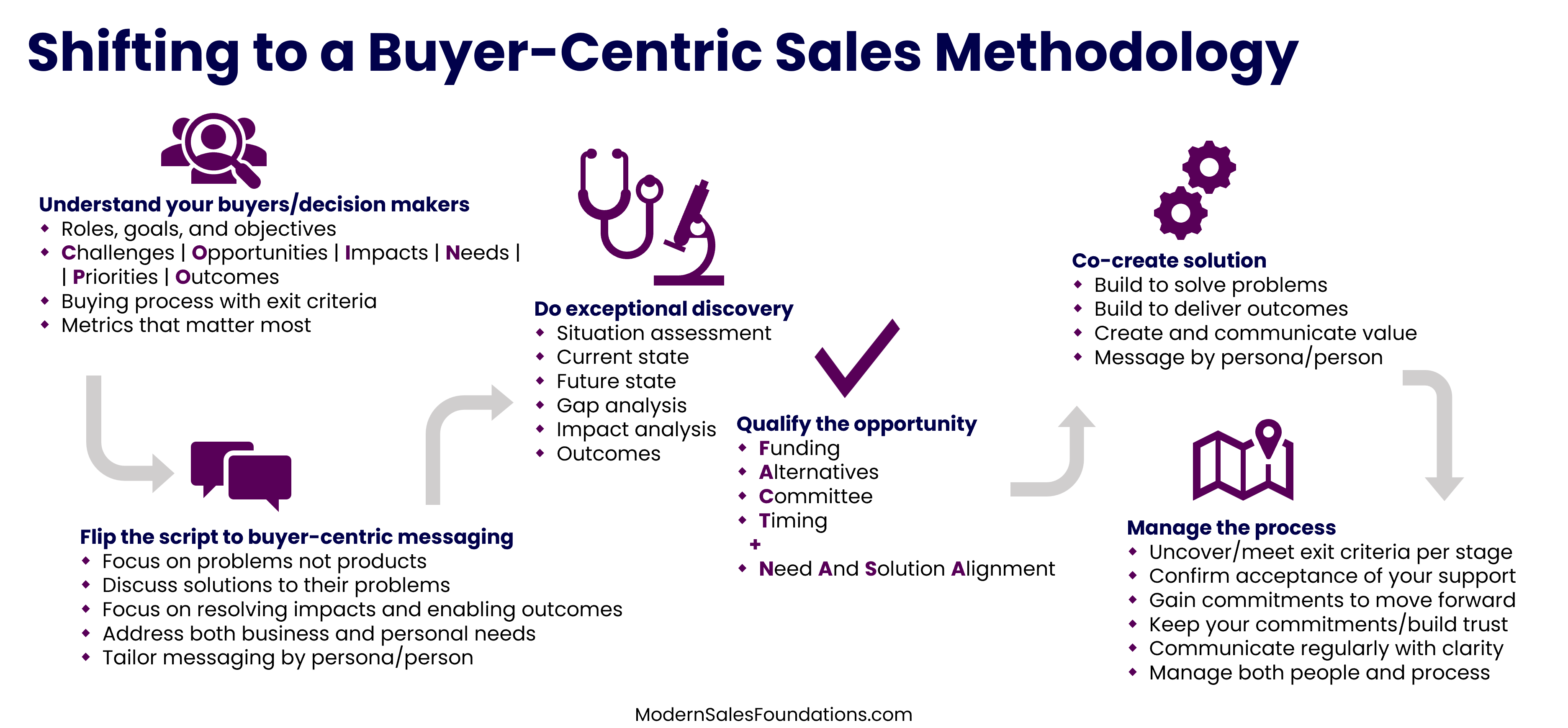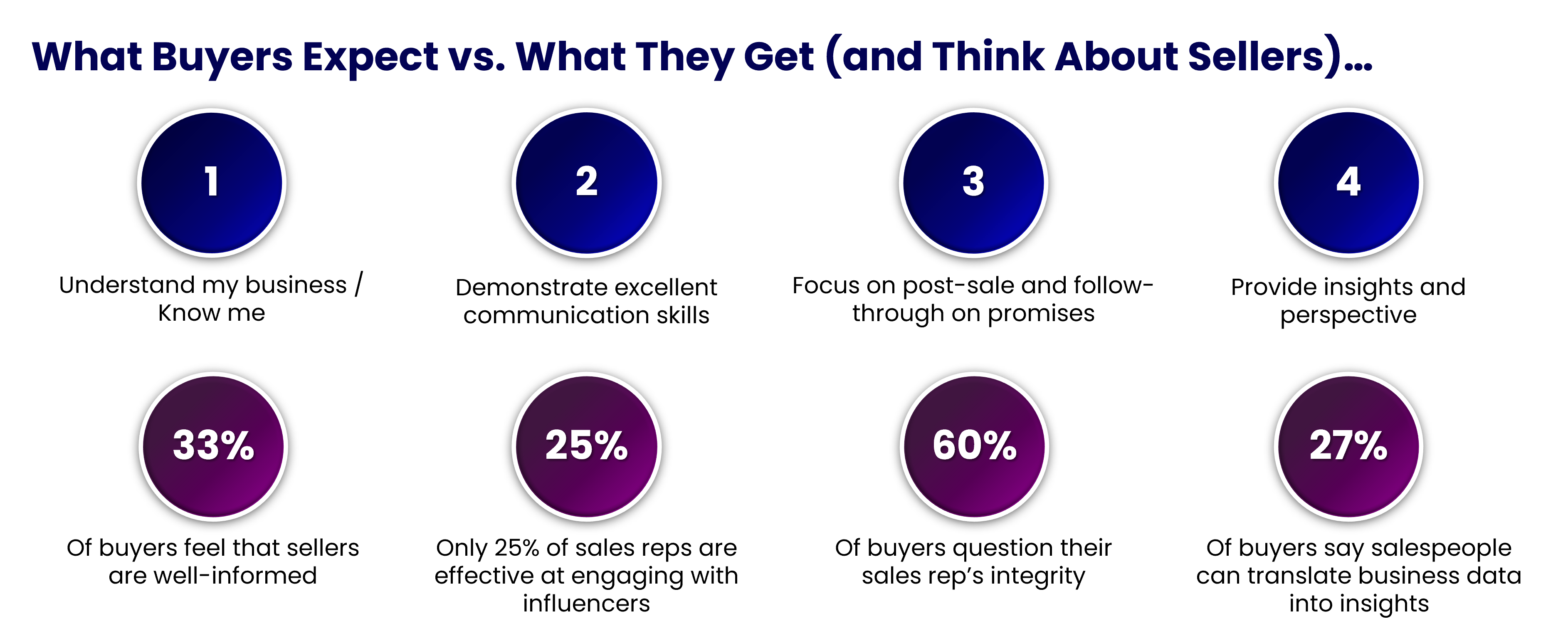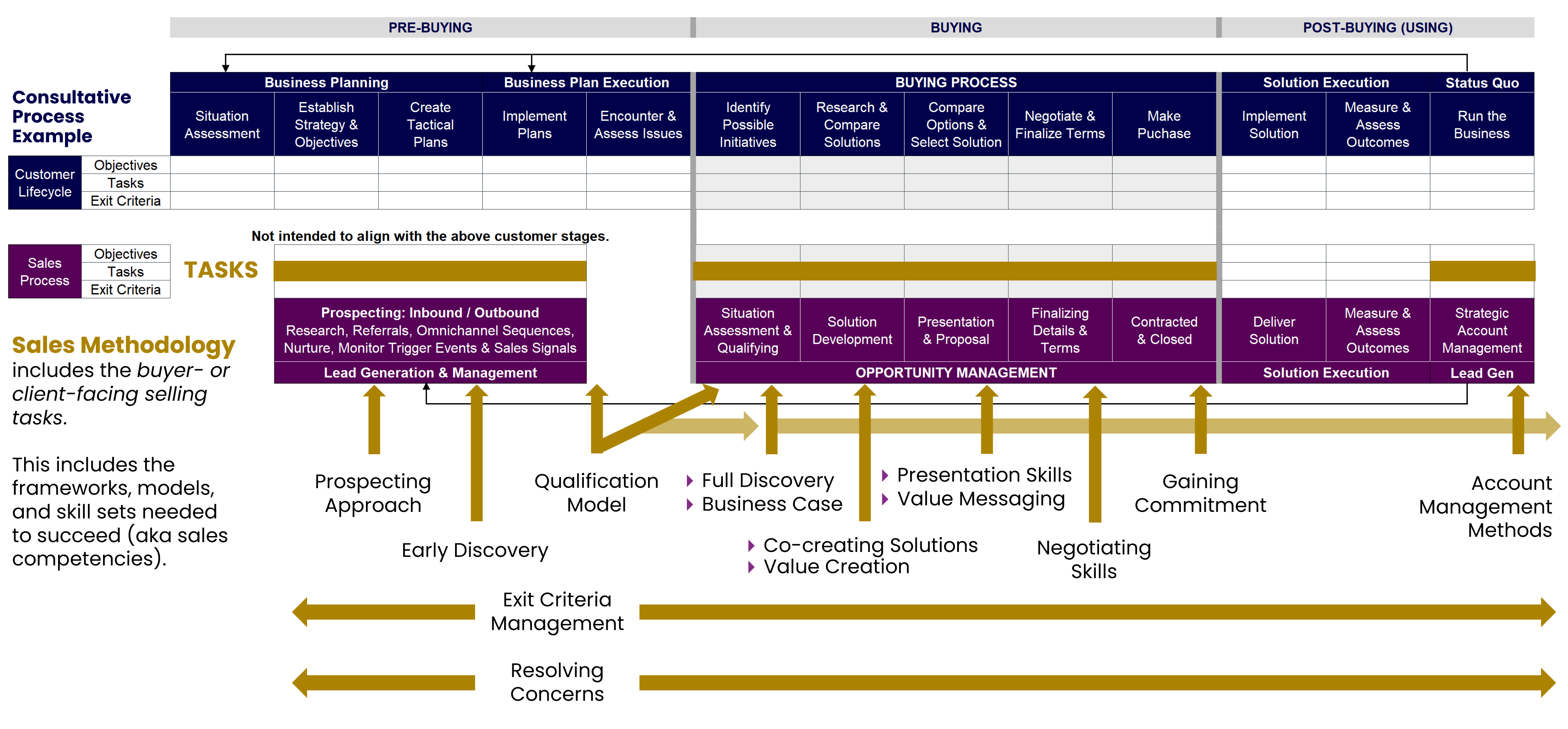We’re All in Sales – Or Maybe Not
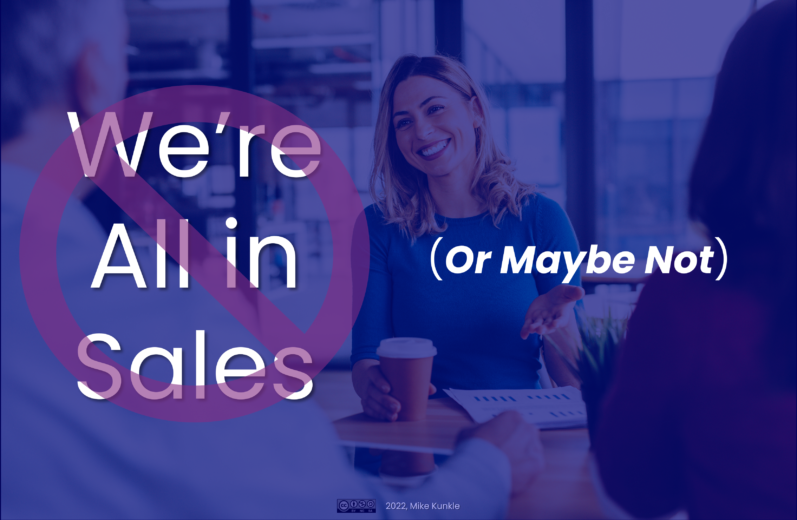
We’re all in sales, right?
Well, maybe. I think the answer depends on what you mean by that (intent) and how you define “sales.”
What is Modern, Professional B2B Selling All About?
I get the intent of the “we’re all in sales” message, generally, much like Dan Pink’s book, To Sell is Human. I view it a bit differently, though, and potentially, see this as a problem about how we view and define selling.
Very often, in life and business, we participate in what I call “the influence business.” We’re trying to persuade, influence, and negotiate to get what we want and get others to do what we want. But that’s not selling, per se. Or at least it shouldn’t be.
The reason I think this is an underlying problem, is because it likens selling to getting people to do what you want — to “selling” your ideas. You’ve heard the phrase “People like to buy; no one likes to be sold.” (I’m not even sure everyone likes to buy — especially not for work, in a buying committee, where there are risks and political ramifications, but the “no one likes to be sold” part is pretty consistent.)
In contrast, modern, professional, B2B selling should be about finding people who have problems you can solve or opportunities you can enable, who have the ability and intent to address these challenges or opportunities, to help them get the results they want. It’s about deeply understanding their situation and desired outcomes, ensuring need and solution alignment, and working to produce the desired outcomes, from the buyers’ perspective.
- It’s targeting (markets, personas, problems)
- It’s situation assessment (current state challenges and opportunities, impacts, needs, desired future state, outcomes, priorities, with gap and impact analyses to create a compelling business case for action)
- It’s problem solving (understanding the situation and root causes)
- It’s value creation (solution matching, co-creation, or solution design to achieve outcomes)
- It’s “other-centric” servant leadership (leading, serving, acting in your buyers’ and customers’ best interests, creating, communicating, and confirming value, and change management)
Yes, once you know that purchasing from you is truly in your buyers’ best interest, then you might use ethical influence/persuasion to get them to act, if they’re stuck or indecisive. (Starting, of course, with WHY they are stuck or indecisive, to ensure you’re addressing the root cause concerns, and returning to the business case and what they want to accomplish/achieve.)
And, when they are buying, you might negotiate to ensure the transaction is mutually beneficial and win-win. (Or, depending on their sense of negotiating, you may have to protect yourself from gambits and tactics and steer things back to relationship-based negotiation and mutually beneficial outcomes.)
But those things aren’t the act of selling itself. And until we flip that script, we are going to continue to see B2B buying research that shows that buyers want to avoid sellers.
Look, all sweeping generalizations are suspect, including this one, but by and large, I see this as being a problem across the profession. It’s a bell curve, as most things are, but far too many people think that selling is about value props, product pitches, product-led growth (PLG), and convincing people to buy what they sell.
“The 1980s called, and they want their sales approach back.”
– Mike Kunkle
Sidebar: In my opinion, solutions that deserve and support using product-led growth are few and far between; yet, it is grossly over-used, especially in tech/SaaS. See this post from Dave Brock to avoid me saying the same things.
B2B buyers are speaking out against seller behavior in record numbers, through surveys, research, buying behavior studies, and the way they now prefer to buy. The above data are a few years old, but relevant. There are other studies today that mirror these perspectives. In various percentages across multiple studies, buyers report that sellers don’t understand them, their business. or their issues. They don’t believe sellers communicate well with senior influencers and decision makers. They don’t trust sellers. They don’t believe sellers provide value.
Many sales organizations and their sales leaders seem completely tone-deaf on this topic. Their mantra remains, “Harder, faster, longer, louder.” They will eventually be completely disrupted or disintermediated; I just can’t predict the exact tipping point or timeframe. The new guard will be data-driven, buyer-centric, trusted-advisor value creators.
In fact, the best-of-the-best B2B sales pros today, already are (and have been for some time). There just aren’t enough of them. They tend to be the top 1-5% of our sales forces. They are servant leaders and do exactly what I described above. They are consultative. They seek first to understand what matters to buyers. They look for need and solution alignment. They are out there. My best hope for our profession is that we can move the middle and massively shift this bell curve.
Final Thought on “We’re All In Sales”
“If you’re not serving the customer, your job is to be serving someone who is.”
– Ian Carlson
In addition to what I’ve already shared above, there’s something else that needs to be said.
Despite the good intentions behind the “we’re all in sales” message, until your livelihood, income, and employment are dependent on your ability to regularly generate revenue and achieve sales quotas, you are not really “in sales.” You should support your sales force and their selling efforts. You should act in alignment with your company’s branding and marketing. You should watch for potential needs for what your organization sells and refer your connections to your sales team when you see a trigger event or sales signal (or if you don’t know this contact/connection well enough, point out the opportunity to your sales leader). If you are engaged in some way in the sales/buying processes, supporting your reps in their efforts or the buyers in their decision process, you should provide the best, most helpful, frictionless buying experience possible. But unless you’re doing the things (the sales methodology) in the graphic below… you’re not “in sales.”
How Sales Methodology Supports Sales Process
Closing Thoughts
As always, this is what I think. I’m equally as curious about what you think. Feel free to comment and let me know.
Thanks for reading, be safe out there, and by all means… let’s continue to elevate our sales profession.
Mike
Follow my work and connect
- SPARXiQ Blog: https://sparxiq.com/author/mikekunkle
- The Building Blocks of Sales Enablement Book: https://bit.ly/BBofSE
- Distribution Strategy Group Blog: https://distributionstrategy.com/author/mike-kunkle/
- Sales Effectiveness Straight Talk Webinars: https://bit.ly/MikeKunkle-OnDemand (60 Free Recorded Webinars)
- LinkedIn Articles: http://bit.ly/MK-LinkedInArticles
- LinkedIn Profile: https://www.linkedin.com/in/mikekunkle
- Twitter: https://twitter.com/mike_kunkle
About Mike
Mike Kunkle is a recognized expert on sales training, sales effectiveness, and sales enablement. He’s spent over 27 years helping companies drive dramatic revenue growth through best-in-class training strategies and proven-effective sales transformation systems – and he’s delivered impressive results for both employers and clients. Mike is the founder of Transforming Sales Results, LLC and works as the Vice President of Sales Effectiveness Services for SPARXiQ, where he designs sales training, delivers workshops, and helps clients improve sales results through a variety of sales effectiveness services. Mike collaborated with Doug Wyatt to develop SPARXiQ’s Modern Sales Foundations™ curriculum and also authored the SPARXiQ’s Sales Coaching Excellence™ course. His book, The Building Blocks of Sales Enablement, is available on Amazon.
